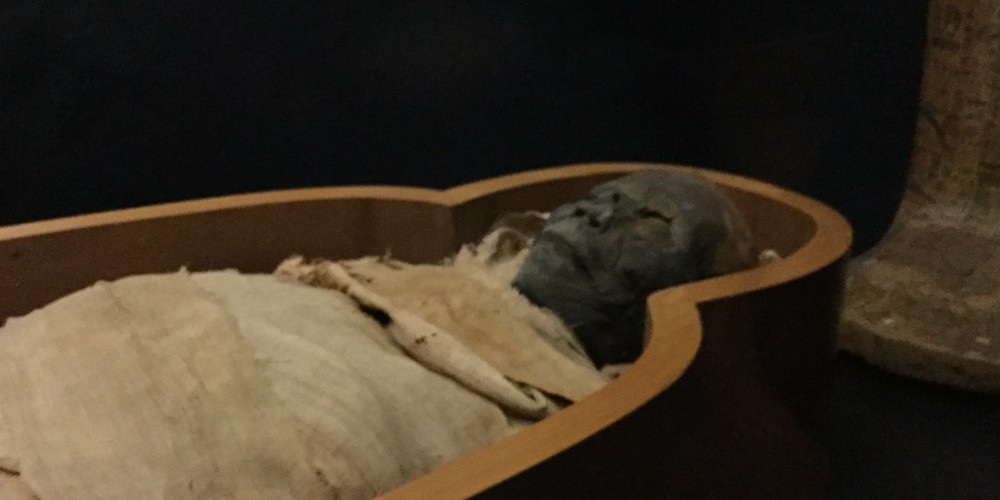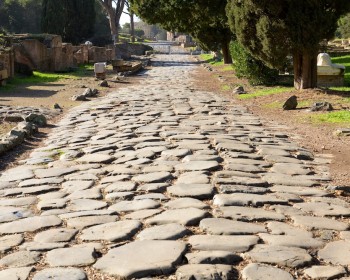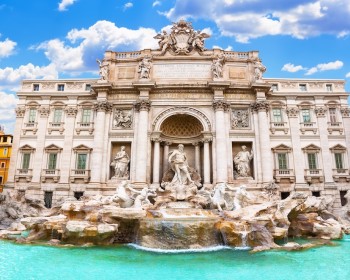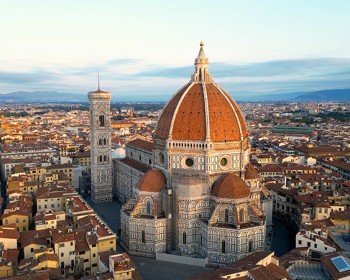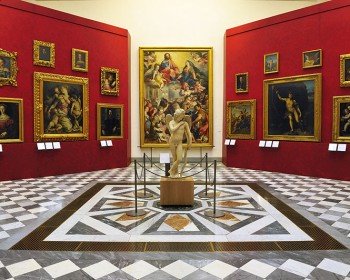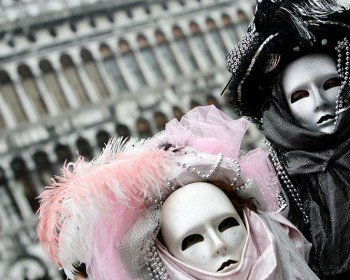Mummies in Italy are scattered throughout the country and are still in perfect conditions. Should they all wake up together we’d be in real trouble: we are full of mummies here!
Most of the times we know they managed to keep intact thanks to the work of monks or doctors or to favourable natural conditions, but sometimes we fail to explain how these embalmed corpses were capable of avoiding decomposition. And we don’t mean the ones hosted in Egyptian museums, wrapped in their bandages… What we are talking about is real Italian mummies, lying inside glass showcases, sometimes even in the open air. If you are passionate about mummies, follow us in this creepy itinerary…
In the ancient times, mummification in Egypt was mainly connected with religion and it is still true today: most of the mummies are hosted inside Churches. Sometimes, though the decomposition process took place without any human help and people discovered those mummies just by accident. When Napoleon passed the Saint-Cloud edict in 1804 many clericals had to remove corpses from Church cemeteries to move them outside the city’s boundaries: it was the perfect chance to discover many mummies hadn’t been affected by the decomposition process at all.
Ferentillo, Umbria
In this small village in the centre of Italy lies the Church of Saint Stephen’s. The building dates back to the 15th century and was used as a burial site from 1505 to 1871. When they the mummies were discovered they still had hair, beards and intact teeth. some were still wearing their clothes! For a long time, people were sure this miracle happened thanks to a water-absorbing fungus, who managed to dry the corpses out. Recent studies have discovered, though, that it is actually thanks to peculiar microclimatic conditions. A phenomenon which took place also in other sites in Italy.
Ferentillo’s mummies are among the most interesting mummies in Italy, because they offer the chance to get to know the life in the village through the centuries. You will see the corpse of the lawyer who was stabbed to death along with that of his murderer, the mum who died just after giving birth, buried next to her little baby, a hanged Napoleonic soldier and, of course, many old people. Among the most interesting mummies in Ferentillo we can see a chinese couple, who had the very bad idea of organizing their honeymoon in Italy, but were fatally hit by the Black Plague. A scientist even managed to stuff two small birds, in an attempt to discover the secrets of natural mummification! Ferentillo is not very far from Terni and from the beautiful Marmore Falls! We can organize a fantastic tour in Umbria: contact us to book!
Urbania, Marche
The Church of the Deads, also known as Cola Chapel, hosts an exhibition which is equally interesting and creepy. The cemetery of mummies was created at the times of the Edict of Napoleon, by the Confraternity of the Good Death. The confraternity has been helping poor and ill people since the 16th centuries, providing free burials and registering all the deaths. In the past people weren’t buried in coffins: that is why some of them were found in good conditions but dismembered and it was impossible to assign a name to them.
Like in Ferentillo, the corpses tell us about the life of the locals: the victim of a murder, a mother who died after Caesarian section (a very common procedure during the Middle Ages) and a person with Down-syndrom. Prepared to feel shivers down your spine, at the sight of the mummy of a man who woke up after he got buried: they thought he was dead but he was just suffering from an apparent death. His rigid position and the tight fists indicate how he tried to get free from underground, while his horrified grin shows the terror.
Venzone, Friuli Venezia Giulia
When churchmen dug under the Church of Venzone, during enlargement works, they found the cemetery had been hosting 20 mummies. Also in this case, inhabitants of the area are sure it is a fungus that helps to preserve the corpses, called Hypha Bombicina Pers, a name was created in the 1800s by a group of scientist who was studying the natural process of mummification. But the real reason of the mummification is the abundance of calcium phosphate in the soil where these person were buried.
Even Napoleon had the chance to admire the mummies with his soldiers, who had the morbid habit of taking a little piece of the mummies with them as a souvenir. In 1976 the huge earthquake that hit the region of Friuli-Venezia Giulia had the ancient Baptistery falling down: the falling buried the mummies once again, but a group of Canadian soldiers brought them back. Only 15 mummies are still visible, protected inside window-cases.
Palermo, Sicily
The Capuchin Catacombs in Palermo host the biggest collection of mummies in Italy: about 8000 mummies are hidden there! Unlikely the other cases we’ve talked about so far, this huge number of corpses was not discovered for a chance: in 1599 the monks realized the soil on which their convent was built could help preserve corpses. Once the news spread many people asked to be buried there and the monks had to build a huge series of catacombs to host the corpses. The monks got so interested in the matter that they dedicated to the artificial mummification of the bodies, a process which took them one year. First, they had to empty the bodies, then they kept them standing in a closed room to let them free of all liquids. Finally, they soaked them in vinegar and stuffed them with straw.
Many of the corpses we see nowadays in the catacombs of Palermo belong to the monks themselves, while the rest belong to the village’s inhabitants. The mummies are divided into different sectors: men, women, kids, virgins, priests, monks, professors. People from the higher classes could have a privileged single niche and might ask to get a dress change every now and then. But the monks specified that they could have kept their niche only if their relatives had visited them for three years in a row, holding burning candles, otherwise they would be removed. The most famous mummy is that belonging to Rosalia Lombardo: two years old who died of bronchiolitis in 1920. It was her dad to order the embalmer Alfredo Salafia to mummify the toddler. The man died before completing the work and, as a result, the body of the 2 years old got deteriorated, while the head is perfectly intact: the natural expression of her face earned her the nickname of “Sleeping Beauty”.
Savoca, Sicily
It seems the Capuchin friars had a certain like for mummies. The convent of Savoca has been hosting a crypt containing mummies of the local noblemen for centuries. Only wealthy people could afford the complex process of mummification we described above. In Savoca we can see 37 mummies exhibited, but there used to be more in the past. In the 50s and 60s locals understood tourists were attracted to Savoca to see the mummies and started exhibiting them without proper care: cramming them in niches too small to contain them and keeping them standing with the aid of unorthodox straps. In addition to this, in 1985 a madman entered the crypt and painted the mummies green. During the last ten years the mummies have undergone a restoration process and now the public can admire them once again.
Bolzano, Trentino Alto Adige
He is older than Egyptian mummies, but he managed to keep intact up to know in a completely natural way. We are talking about Ötzi, a.k.a. the Man of Similaun, who was found at the feet of this glacier on the Austro-Italian border by two German hikers. It looks like Ötzi was hit by an arrow and died on the spot: some suppose he was a shepherd (he was wearing animal fur), others think he was from a higher class, since he was wearing several jewels. Thanks to Paleo-anthropological and scientific studies we managed to know that Ötzi lived in the Copper Era, between 3,00 and 3,100 years ago. Today you can see him in the Alto-Adige Archaeological Museum in Bolzano, kept in a refrigerated window-case: only Tutankhamon is more famous than him!
Lodi, Lombardy
Scientist Paolo Gorini, also known as the “Wizard of Lodi”, deserves a mention in this article: his Anatomical Collection, hosted inside the Old Hospital of Lodi (which was previously run by monks), is an impressive example of the progressing of science and medicine in the 1800s. Guerini, in particular, had developed a method to mummify corpses, called “petrifaction”. He would inject a solution inside the corps to replace the boy fluids: this liquid developed a process very similar to that taking place during the fossilisation of organic materials. A secret formula that the Wizard of Lodi managed to bring inside his tomb…Scrupulous studies managed to disclose some of those secrets, but the mystery that surrounds the work of Gorini still remains. You can feel the same atmosphere visiting the exhibition about Gorini: perfectly preserved corpses of men and children, next to heads and several anatomical parts. The process of petrifaction managed to keep their features intact, complete with hairs and hair. The work of Gorini was linked to ermetism and death, but also to the Positivist Movement. Ages before radiography and cold storage, the anatomical machines developed by Gorini let doctors study anatomy and different diseases, while painters and sculptors used them to study the human body. He was so appreciated in Italy that he was asked to embalm the body of Giuseppe Mazzini.
Are you passionate about mummies and catacombs? Would you like to know more about mummies in Italy and the many treasures hidden in the underground of convents and churches? Book a tour with us and we will assign you a guide who will tell you all about this fascinating theme!
